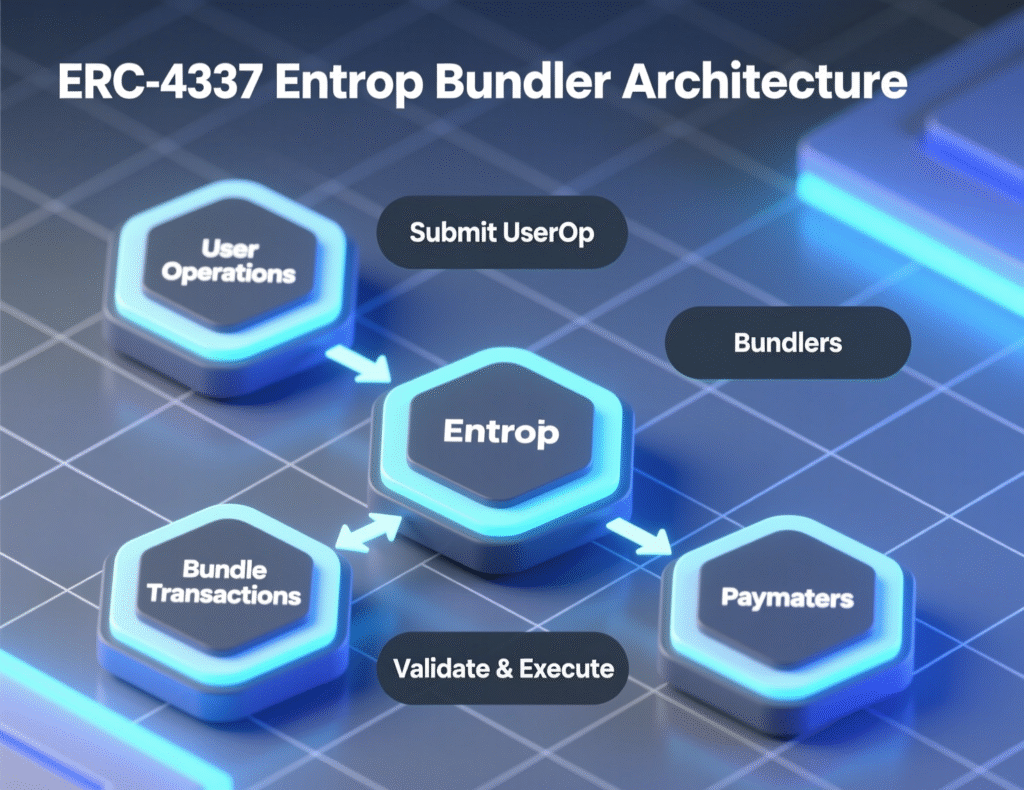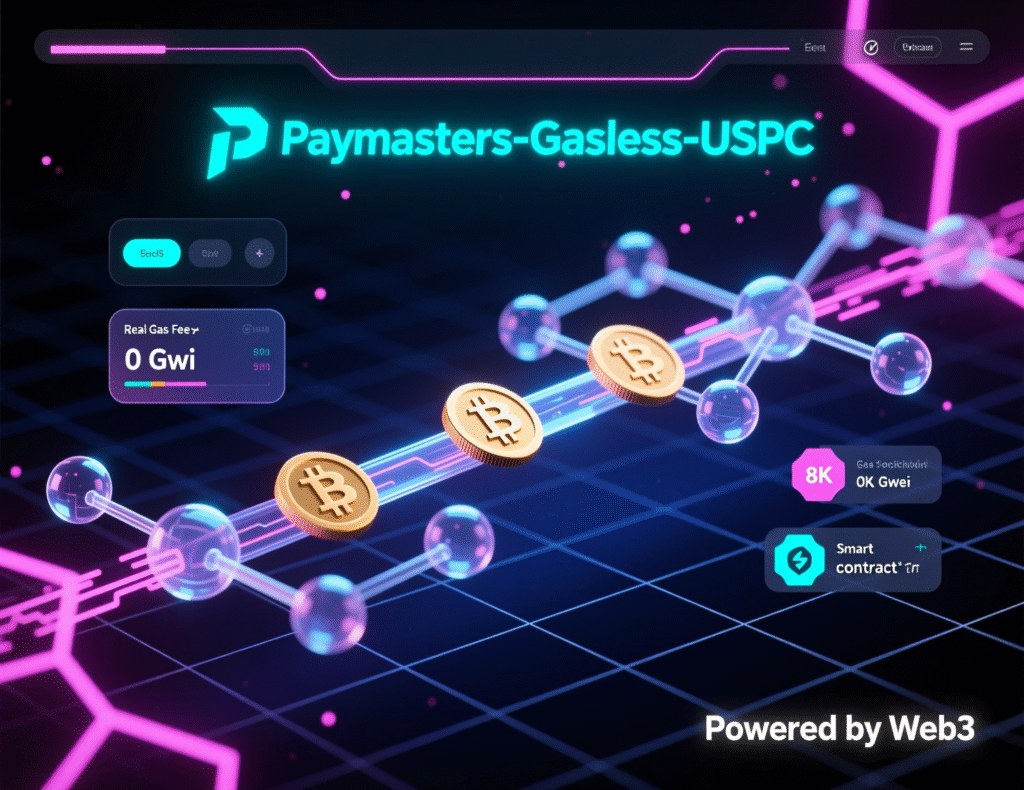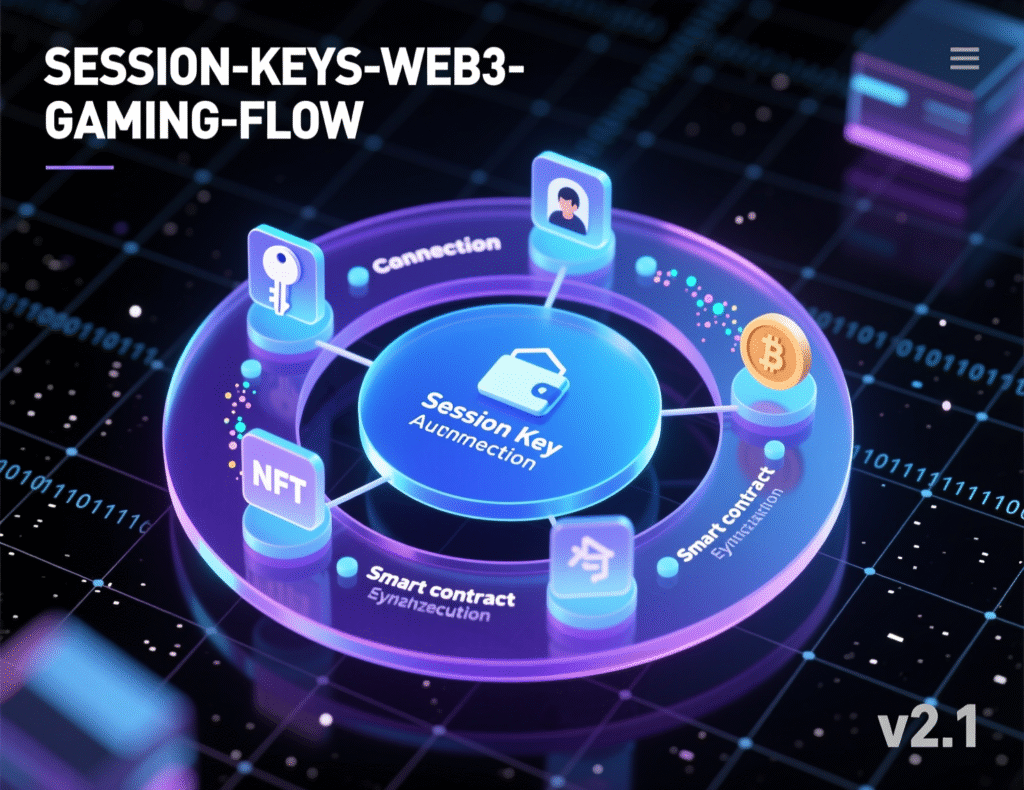Account Abstraction & UX Upgrades
If you’ve ever watched a new user bounce at “connect wallet,” you know the gap between Web3’s promise and its day-to-day experience. Account abstraction closes that gap. Instead of forcing people to manage seed phrases, juggle gas, and approve every micro-action, smart accounts let apps design flows that feel as simple as Web2 log in with a passkey, one-tap checkout, and recover access if something goes wrong.
In 2023, ERC-4337 brought account abstraction to Ethereum without a hard fork; in 2024 2025, EIP-7702 pushed the idea further by giving EOAs “temporary smart account superpowers” via delegation, slated alongside the Pectra upgrade path. Together with paymasters, session keys, and transaction batching, these UX upgrades are finally moving from slides to production and they’re measurable in onboarding, retention, and support tickets. vitalik.eth.limo+3Coinbase+3Alchemy+3
Why Account Abstraction Matters (for Growth, Not Just Elegance)
Lower friction at first action
Gasless or ERC-20 gas payments remove “get ETH first” roadblocks. Paymasters can sponsor fees or accept USDC/USDT directly.
Safer, human-scale auth
Smart accounts support social recovery, rate limits, multi-sig, and single-tap passkeys less chance of catastrophic key loss.
Fewer pop-ups, more doing: Session keys
Authorize scoped actions for a time window, so users don’t sign 30 transactions in a game or workflow.
Production-ready now
L2s and major wallets (e.g., Base/Coinbase Smart Wallet) are prioritizing smart accounts, with visible adoption momentum.
AA Primer: ERC-4337, Smart Accounts, and the EntryPoint
ERC-4337 adds a separate “UserOperation” mempool with bundlers submitting batches to a global EntryPoint contract. Smart accounts (contract wallets) define their own validation logic passkeys, guardians, spending limits while paymasters can underwrite or denominate gas. This works across EVM chains without a base-layer hard fork, which is why teams shipped it in 2023–2025.

What it unlocks
Programmable verification
Replace “one key rules all” with policies (multisig, passkeys, limits).
Gas flexibility
Sponsor fees or let users pay in ERC-20 tokens they already hold.
Batching
Combine approve + swap + stake into one smooth confirmation.
EIP-7702: Bringing Smart Powers to EOAs
Introduced by Vitalik in 2024 and now discussed alongside Pectra, EIP-7702 lets EOAs temporarily act like smart accounts by attaching delegation logic to a transaction (a “temporary contract code” for that call). Practically, this enables Web2-like UX passkey logins and one-tap actions without replacing every EOA overnight. It’s a bridge from today’s wallets to tomorrow’s truly abstracted accounts.
What product teams should note
Shorter migration: leverage 7702 patterns before a full smart-account migration.
Compatible with session keys and paymasters in app-level UX.
The UX Toolkit: 7 Patterns You Can Ship This Quarter
Passkey-First Onboarding
Ditch seed phrases on day one. Let users create a smart account with device passkeys; offer social recovery later. When they return, they “just log in.” Coinbase’s Smart Wallet and Base-native flows exemplify this direction.
Gasless First Action (Paymasters)
Use a sponsorship paymaster to absorb gas for the user’s first action (mint, swap, or join). Or accept USDC/USDT for gas via an ERC-20 paymaster clear value in consumer UX.

Session Keys for Multi-Step Flows
Let users approve a scope (“play game,” “list items,” “auto-DCA for 24h”) and minimize pop-ups. Games and high-frequency apps particularly benefit.
Transaction Batching
Bundle approve + action + cleanup (e.g., revoke) into one confirmed UserOp. This cuts time-to-value and reduces failed flows.
Progressive Controls & Recovery
Smart accounts can expose spending limits, whitelists, and guardian recovery safer defaults than EOAs. Position these as plain-English settings in onboarding.
Intents-Friendly Architecture
AA meshes with intents (user states desired outcome; the system routes to best path). Keep signatures minimal while preserving user control. (Industry narrative; validate per your stack.)
Cross-Chain UX with Multichain Gas
Use gas abstraction so users don’t manage “the right gas token on the right chain.” This is increasingly common across EVM L2s.

Mini Case Studies
Case Study A Base & Coinbase Smart Wallet (2024–2025):
Base publicly set a goal to make smart wallets the default. By 2025, Coinbase’s Smart Wallet emphasized passkey sign-in, account-backed signing, and AA features to cut onboarding friction. Reports note sharp adoption“smart wallets top 1M” amid Base app rollout which correlates with reduced user drop-offs at first on-chain action. Takeaway: passkeys + sponsored gas = fewer abandonments.
Case Study B Session Keys in Games (thirdweb examples, 2024–2025):
Games using session keys let players perform many actions without constant wallet prompts. This improves session length and conversion while preserving asset safety (scoped permissions, expiry). Takeaway: scope-limited session keys decrease friction without compromising custody.
Implementation Notes: What Engineers Ask
Security model
EntryPoint validates UserOps; accounts define verification; paymasters settle gas with bundlers. Review replay protections and rate limits.
Tooling
Use audited AA SDKs/wallet infra (e.g., Alchemy/thirdweb/Turnkey/others) with bundler + paymaster support.
EIP-7702 compatibility
Treat as a stepwise upgrade path use temporary delegation to streamline flows while you migrate to full smart accounts.
Compliance & risk
Log policy actions (who approved, limits) and add guardian recovery that fits your risk profile.
Metrics to Track Post-AA
Activation rate
% who complete first on-chain action (baseline vs. with gasless + passkeys).
Prompt count per success
Median signature prompts per conversion (target <2).
Time-to-value
First value event time (e.g., minted NFT in <30s).
Support load
Ticket categories “wallet connect,” “gas,” “seed recovery.”
Return rate
7/30-day repeat actions (session keys often lift this).
Industry stats show smart account usage climbing since ERC-4337’s launch, with the majority of smart accounts still early in lifecycle (fewer than five UserOps each) but trending upward suggesting large headroom for growth as UX improves.
Common Pitfalls (and How to Avoid Them)
Invisible consent
Don’t hide everything show clear scopes, durations, and limits for session keys.
Over-custom gas logic
Start simple: sponsor first action; expand to ERC-20 gas later.
Security theater
Guardian recovery must be explainable and testable; publish recovery drills.
One-chain thinking
If your users are multichain, abstract gas across chains from day one.

Concluding Remarks
Account abstraction takes Web3 from “wallet pop-ups and gas confusion” to product flows that people actually finish. With ERC-4337 smart accounts in production and EIP-7702 accelerating EOA-friendly upgrades, teams can ship passkeys, gasless actions, session keys, and batched transactions now not in some distant roadmap.
The result isn’t just elegance: it’s better activation, retention, and lower support costs. If your 2025 growth plan doesn’t include account abstraction, you’re leaving conversions on the table.
CTA
Want a hands-on AA rollout plan (SDK selection, paymaster design, KPI blueprint)? Book a working session let’s make your Web3 feel like Web2 without sacrificing self-custody.
FAQs
1) How does account abstraction work in plain English?
A : Account abstraction lets a smart account enforce flexible signing rules and handle gas on your behalf. A bundler submits your actions (UserOps) to an EntryPoint contract, which validates them and pays gas optionally via a paymaster. Result: fewer pop-ups, safer defaults.
2) How is EIP-7702 different from ERC-4337?
A : ERC-4337 adds smart accounts without a hard fork. EIP-7702 lets EOAs temporarily behave like smart accounts via delegation useful as a bridge to better UX while keeping EOAs.
3) How can I offer gasless transactions safely?
A : Use a paymaster with guardrails (allowlist, spend caps, KYC tiers). Start with first-action sponsorship; expand to ERC-20 gas (e.g., USDC) once you see lift.
4) How do session keys improve UX?
A : They authorize scoped, time-boxed actions (e.g., “play for 60 mins”), so users don’t confirm every click. Great for games, marketplaces, and power workflows.
5) How risky are smart accounts compared to EOAs?
A : They’re often safer: you can add limits, multisig, and social recovery. The risk is implementation bugs use audited contracts and reputable SDKs.
6) What metrics should I track for AA adoption?
A : Track activation rate, time-to-first-value, prompts per conversion, and support tickets. Many teams see immediate gains with gasless + passkeys. (Generalized from industry patterns.)
7) How long does migration take?
A : You can ship AA features incrementally: start with paymaster + batching; later move to full smart accounts or use 7702 to bridge.
8) How does AA help with multi-chain apps?
A : Gas abstraction and ERC-20 gas let users act across chains without managing native tokens for each.
9) How do paymasters work with compliance?
A : They can enforce policy in code (limits, allowlists). Many providers integrate KYC/AML flows where required. (Provider-specific; verify with your vendor.)

